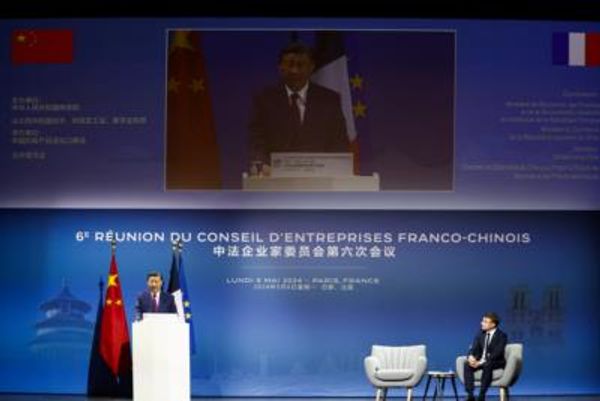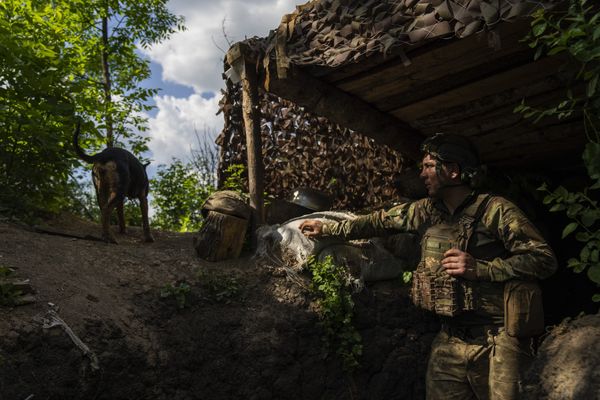
The Albanese government wants you to believe this is its budget “for women”. It isn’t.
“Labor is backing Australian women with the most significant single-year investment in women’s equality in at least the last 40 years,” tweeted Minister for Finance and Minister for Women Katy Gallagher. “Because equality for women isn’t an add-on or a nice to have. It’s crucial for our prosperity.”
It’s true that this budget includes some significant gains for women — built on other significant gains delivered since the election. And yes, there were also some disappointments. More importantly, none of this means that the Albanese government’s budget “for women” in the truest sense won’t yet be delivered. But we’re not there yet.
Let me explain. Ahead of the budget, there was a lot of talk about “laying the foundations for future prosperity”, and I suppose my pragmatic assessment of this year’s dedicated “women’s budget” is that it lays the foundation for future women’s budgets.
Like so many other areas of this budget, the Albanese government seems to view this women’s budget as a transitional object, doing enough but not yet holistically tackling the big structural reform women need. The priority was clearly to establish Labor’s credentials as the “better economic managers” by delivering (and bigging up) a surplus while not frightening the horses on tax and revenue. And this was followed with a — wink, wink — implied promise that once this part of Labor’s rebranding exercise is complete, it’ll get to the big important things “later”.
The key question is how much later? Some, such as Danielle Wood, chief executive of the Grattan Institute and member of the Albanese government’s dedicated Women’s Economic Equality Taskforce, writing in The Saturday Paper, asked with concern: if not now, when? I’m inclined to agree.
“A bolder approach would be more in keeping with the scale of these challenges and this point in the political cycle,” Wood wrote. “Many in Labor are talking about taking bolder policies to the next election as part of a ‘two-term strategy’. But if the prime minister isn’t willing to have these conversations now, what’s the chance he will want to have them in the pressure cooker of an election campaign?”
Having said this, I give full credit to what I call “The Persisterhood”, the advocates who mounted what Patricia Karvelas described on ABC’s Insiders as “the most effective campaign she has ever seen” to deliver real change for women and those on welfare payments. I particularly pay heed to Sam Mostyn who chaired the taskforce, and its other members, including Wood.
As I previously wrote, a letter from the taskforce to Gallagher ahead of the budget laid out six initial demands in bold and direct language, essentially issuing a direct challenge to the Albanese government to prove to understandably sceptical Australian women (women whose votes were key to determining the outcome of the last election, mind you) that they meant all those nice words and big promises made in the first women’s budget statement in October.
Just to refresh your memory, in a forward signed by the prime minister, treasurer and minister for women, the Albanese government promised to make Australia “one of the most gender-equal countries in the world”.
The taskforce asks included the reinstatement of the single parenting payment, the abolition of the ParentsNext program and the childcare activity test, payment of superannuation for primary carers while they are on paid parental leave, increasing the rate of Commonwealth rent assistance to improve women’s immediate housing security, and an interim pay rise for early years educators and aged care workers in recognition of the historical undervaluation of their work.
I will add to that that women’s safety advocates have long said funding of $1 billion a year is needed if the government is to make good on its promise, a promise first made by the new Social Services Minister Amanda Rishworth when she launched the national plan to end violence against women late last year, to “end violence within a generation”.
Here’s a quick scorecard: the single parenting payment has been restored, but only until a child turns 14, not the suggested age of 16, and mutual obligations remain (more on that in a minute). ParentsNext is gone. The childcare activity test stays. It’s a no to superannuation for paid parental leave. Commonwealth rent assistance has been increased by 15%, a figure welfare advocates worry isn’t enough. And aged care workers will get a pay bump but early years educators will have to wait.
As for women’s safety, there’s an additional $589.3 million over the forward estimates that builds on the $1.7 billion in the October budget — still far short of the minimum $1 billion a year that’s required.
Here’s a quick thought experiment. Changes to the petroleum resources rent tax (PRRT) will generate $7.4 billion over the next 10 years. That’s the lifespan of the new national plan to end violence against women. And we all know that these changes were near-universally met with condemnation for not going far enough — except by those in the resources sector. Funny that.
But modest additional measures to the PRRT proposed by Rod Sims, a professor at the Crawford School of Public Policy at the Australian National University and former chair of the ACCC, would bring in three times that ($22.2 billion) over the next decade. Anyone looking for a bit of room in this budget to find that $1 billion a year for women’s safety… Bob’s your uncle! As the cliché goes, budgets are all about choices. And I defy anyone to argue that saving women’s lives is inflationary.
Finally, here’s the thing I’m irrationally shitty about. When announcing the changes to the single parenting payment, in both a Twitter thread in which Albanese reminded everyone of his log cabin story growing up with a single mother, and in a press release, the Albanese government was at great pains to emphasise — like really make a very fine point of it — that mutual obligation would remain.
And that to my mind is a giant dog-whistle to those who believe that women, especially mothers, are a bunch of dole-bludging welfare queens who would sit around eating bonbons and living the high life — as if anyone could on these meagre payments — if they weren’t incentivised to find work.
It’s that attitude that got us into this mess in the first place. When Julia Gillard made the fateful final changes to the single parenting payment a decade ago, reducing the age of eligibility to when a child turned eight from 16 for all parents, she said: “We actually believe it’s very, very important for kids in single-parent families to see that their parent — very often a woman — is a person who has a job and goes to work.”
But here’s the thing. Those changes did not do what they said on the tin. New research from Kristen Sobeck and Bob Breunig of the Australian National University Crawford School of Public Policy found that most remained on income support and on lower incomes.
There are significant barriers to this cohort finding jobs, namely disability and domestic violence: “If domestic violence underlies welfare dependence among single mothers (and it likely does),” the report says, “it doesn’t take rocket science to appreciate the difficulty of getting those mothers into work.”
Sobeck told me: “Mutual obligations or not, they’re going to rely on these payments because the barriers are so great.”
Unfortunately, it didn’t take long for former Liberal senator Amanda Stoker to come along and prove exactly who this dog-whistle was intended for. In an opinion piece for Sky News, Stoker shamefully referred to the single parenting payment as “sit down money”.
Why on earth is the Albanese government going out of its way to pander to those who sling outdated, lazy dole-bludger slurs at women fleeing violence?
Put simply, it’s bad policy because it’s political, not evidence-based. The same could be said of the decision to keep the childcare activity test. And that is precisely the kind of thing we were assured the new Office for Women with its evidence-based “gender-responsive budgeting” would not be doing.
All that said, this isn’t the end of the road. I refer you back to that grand commitment in Labor’s first women’s budget to make Australia “one of the most gender-equal countries in the world”. And I’ll just add that I have every confidence “The Persisterhood” — and the women of Australia who proved so powerful at the last election — will hold them to it. I am encouraged by the overall direction of travel.







